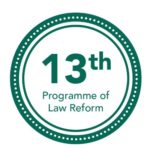This category can only be viewed by members.
Sarah Mirza discusses the problems raised by the new form, and the issues that have arisen since As a result of AN14, the industry discovered a widespread problem with the design and construction of external wall systems in tall buildings – particularly the use of readily-combustible cladding systems, forms of insulation and defective cavity barriers. …
Continue reading "Fire safety: Form ESW1 reviewed"
This post is only available to members.
Lauren Fraser and Laura Bushaway consider the ramifications of the Law Commission’s proposed reforms The Law Commission’s proposals envisage a significantly larger role for the First-Tier Tribunal, making it the primary forum for disputes regarding residential property. Residential property ownership could look very different in the future if the Law Commission’s package of reforms to …
Continue reading "Commonhold: A change for the better?"
This post is only available to members.
Sarah Cardew warns of the impact on past and future real estate transactions of recent changes to VAT rules Particularly worrying is the fact that the retrospective nature of this change might not be limited to VAT and could represent a change of direction for the government, as they seek to recoup revenue after the …
Continue reading "VAT: New guidance on compensation payments"
This post is only available to members.
Emily Holdstock considers fire safety in the construction industry post-Grenfell, focusing on the Bill and the reforms it proposes to introduce The Building Safety Bill aims to establish a chain of duty holders across the life cycle of higher-risk buildings. Few will be unaware of the events at Grenfell Tower in west London on 14 …
Continue reading "Construction Focus: The Building Safety Bill and beyond"
This post is only available to members.
Is it possible to resist an application to amend on the grounds that the new case could and should have been advanced earlier? Martin Hutchings QC reviews the basic principles in the context of a recent case One could be forgiven for concluding that the danger that the rule in Henderson is designed to meet …
Continue reading "The Henderson rule: Applications to amend"
This post is only available to members.
Nicola Gooch assesses the government’s recent white paper aimed at streamlining the planning system Sites that are allocated within growth areas would be given an ‘outline planning permission’ by the allocation itself, subject to restrictions on height, massing or density set out in the allocation itself. On 6 August 2020, the government launched its ‘Planning …
Continue reading "Planning for the future: Evolution comes with centralisation"
This post is only available to members.
The stay on possession proceedings, which came into effect at the start of lockdown, is due to end on 20 September. Annabel Heath considers the steps for both existing and new claims, together with the defences tenants are likely to raise There is likely to be a flurry of litigation putting even further strains on …
Continue reading "Residential possession claims: Lifting the stay on proceedings: more questions than answers"
This post is only available to members.
Emily Holdstock assesses the implications of the pandemic so far and gives her thoughts on what lies ahead Force majeure is not defined within the JCT, but is understood by most lawyers to mean circumstances which are unforeseeable and beyond either party’s control. While many construction lawyers began to advise their clients on the implications …
Continue reading "Covid-19 and construction: Six months on"
This post is only available to members.
On 21 July 2020 the Law Commission published three final reports on residential leasehold and commonhold. Here, Professor Nick Hopkins, Simon Marciniak and Emily Fitzpatrick provide an overview of their recommendations as well as the thinking behind them There are shortcomings in the current law governing commonhold. In particular, it is too inflexible to accommodate …
Continue reading "The future of leasehold and commonhold: The Law Commission’s proposed reforms"
This post is only available to members.
George Mallet considers the practical implications of the recent Supreme Court judgment in Duval In affirming the distinction between the absolute and permissive clauses, the Supreme Court implicitly re-affirmed the established principles on the construction of contractual terms as set out (inter alia) in Arnold. In Duval v 11-13 Randolph Crescent Ltd [2020], the Supreme …
Continue reading "Residential leases: Case study: Clarifying a landlord’s obligations"
This post is only available to members.








